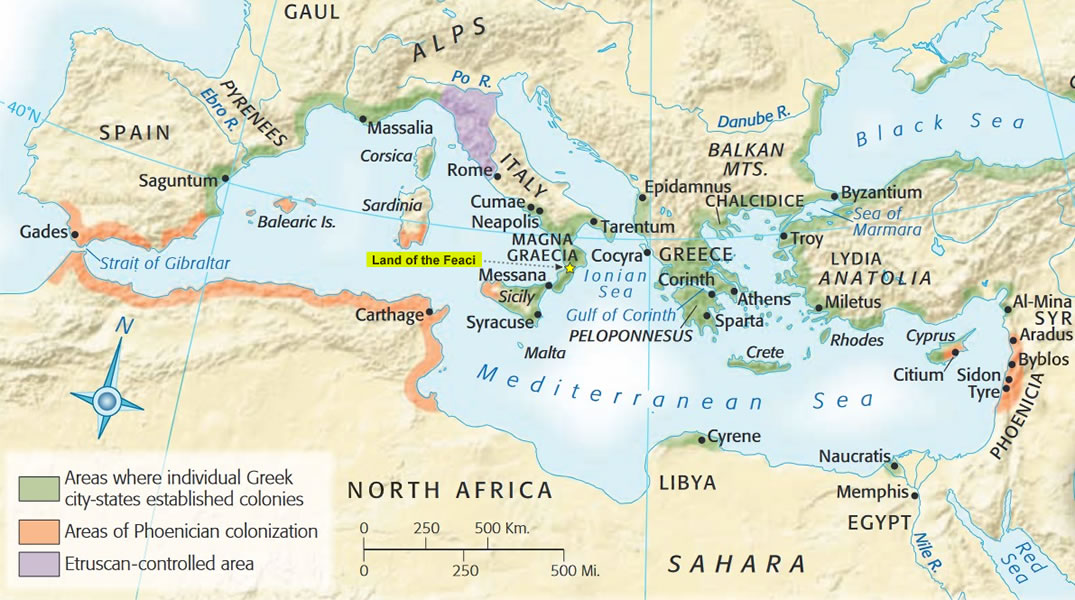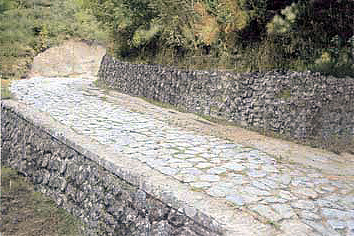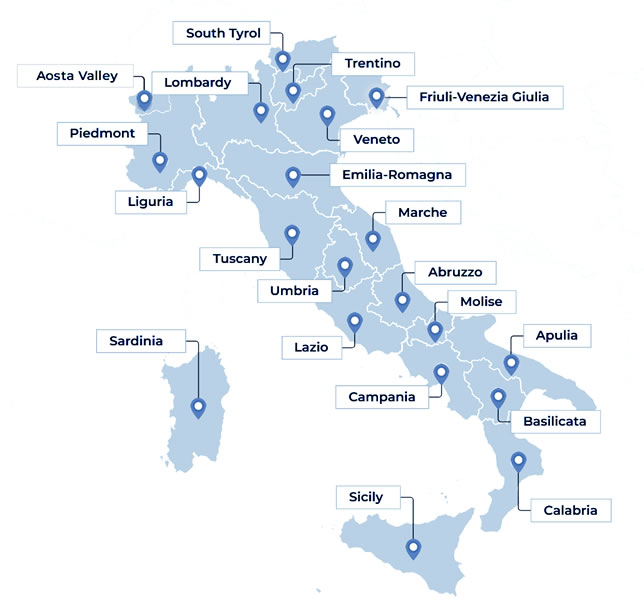

Explore Italy by place | region | time period
Rome's Regal period » Roccelletta (Catanzaro, Calabria)
Not all places mentioned in Homer’s Odyssey are as real as Ithaca, Troy, Malea or Kythera. There are some ones amazing as the Kingdom of the souls of the dead (Hades), and others which are a cross between fantasy and reality.
We can calculate approximately the actual duration of Ulysses' journey in about sixty days, while stay at the twelve stages of his adventure is estimated to be of about eight years. Many theories have tried to identify the places by placing the hero in far countries such as Italy, Palestine, Spain, Crimea, Tenerife, etc. But distances are not compatible with the times. Then, we must necessarily consider a longer limited space.

According to the professor and historian Armin Wolf, the famous Land of the Phaeacians was between the gulf of Sant'Eufemia and that of Squillace, where is the narrowest point of Italy (about 32 km), the isthmus of Catanzaro (or Calabrian). For Aristotle, the isthmus was one of the busiest transit routes of Magna Graecia, and could be crossed in half a day’s walk. In reality, it took more time because the territory was not all flat but also mountainous. Odysseus would cross it and then reach the port at the mouth of the river Corace and embark to return to Ithaca.

Wolf uses the geographical and navigational indications in the Odyssey and submits that Homer locates the adventures of Odysseus along the coasts which the Greeks of his time (VIII BCE) were discovering and using during the colonization in West. Thus, the Land of the Phaeacians was at the isthmus in Magna Graecia for Homer.

There are those who localized the Land of the Phaeacians in Palestine, Tunisia, Andalusia, Istria, Cyrenaica, Malta, Crete, Corfu, Trapani, or Germany.
Flavius Magnus Aurelius Cassiodorus Senator (c. 485- c. 580) - he was born, lived, and died at the Calabrian isthmus in Skylletion - tells that Odysseus founded Skylletion when he arrived in the Land of the Phaeacians. A legend tells that the king of Athens Menesteus was the founder of Skylletion, but archaeological investigations confirmed that they were Greek settlers from Athens or Croton in the 6th-5th centuries BCE. Most reliable sources indicate that the colony was an important communication center and a military and commercial port of great importance, so much so that Virgil decanted it in the Aeneid.
The Roman colony Minervia Scolacium overlapped by the will of Caio Gracco where the Greek colony Skylletion once thrived. Today, that place is called Squillace and houses an archaeological park with remains of Roman times (basilica, forum, amphitheater, taverns, baths, two aqueducts, fountains and necropolis) and a museum with ancient Roman and Greek finds.

Homer narrates that the land of the Phaeacians appears as a shield (rhinón) on the sea ... it lies once in front and once behind Scylla and Charybdis
seen from Greece. So it is located behind and in front of a narrow strip of land as in Calabria, because its west coast lies on the Tyrrhenian Sea and the eastern one on the Ionian Sea. In fact, Homer refers to two different coasts linked by a path between the two seas.

... the wave and the storm broke his raft near the land of the Phaeacians. Odysseus swam, reached the coast and saved himself. Later, he walked along a slope. The next day, he crossed some valleys by floats led by mules towards the capital of the Phaeacians. On another day, he reached the port and was finally able to board a ship which returned him to his homeland.
Homer tells that Odysseus, when he was at the mercy of the waves on a raft, was first thrown on a rocky and steep coast (perhaps Rovaglioso, Calabria), then he came to rest at flat beaches and stayed in a safe place, in a cave not far from the sea (perhaps the beach of Trachina where there is the cave of Pietrosa).
Odysseus recounted the different stages of his perilous journey when he was at the court of King Alcinous: from Troy to the land of the Phaeacians called by Homer Scheria (Palmi, Costa Viola).

Some scholars speak of the island of Phaeacians but the Greek text does not contain the word 'island', on the contrary Homer calls it Scheria or Skera, in the isthmus of Catanzaro, which means mainland (continent or country). In fact, Ulysses finally reached the mainland in Calabria after being in numerous islands (Malta, Sicily, Ustica, Lipari).
The Romans used the Calabrian isthmus to pass a branch of the ancient consular Annia Popilia way which connected Calabria Campania, and then, the Via Appia with Rome.

In order to know more, you can visit:
- Wikipedia: [1]
This page was last edited on 8 June 2024

Open in Google Maps and find out what to visit in a place.
Go to: Abruzzo | Aosta Valley | Apulia | Basilicata | Calabria | Campania | Emilia Romagna | Friuli Venezia Giulia | Lazio | Liguria | Lombardy | Marche | Molise | Piedmont | Sardinia | Sicily | South Tyrol | Trentino | Tuscany | Umbria | Veneto

Text and images are available under the Creative Commons Attribution-ShareAlike License 4.0; - italystudynotes.eu - Privacy